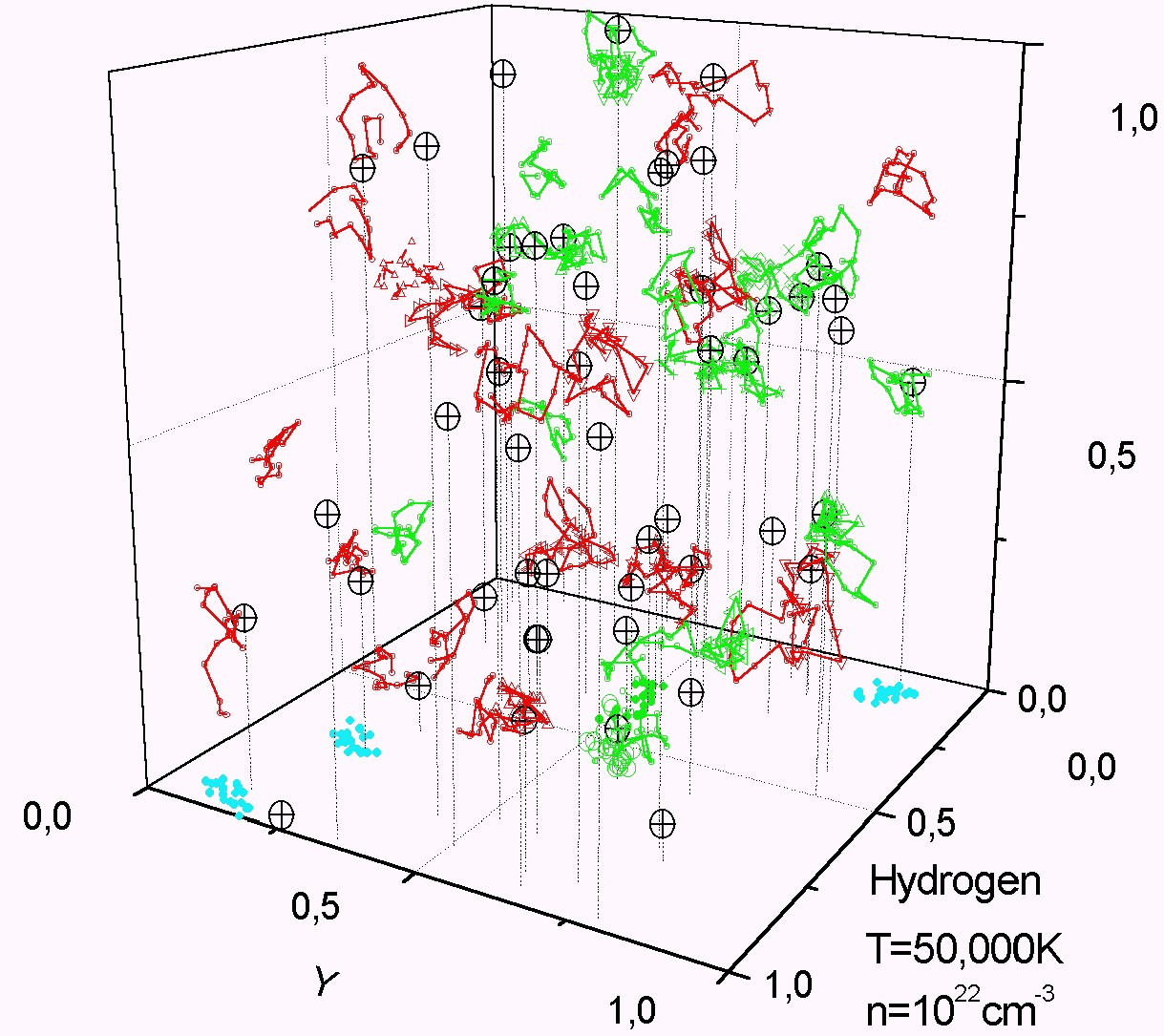Path integral Monte Carlo simulation of dense hydrogen
- The simulations start with N electrons and N protons. A Monte Carlo procedure is
used to find the energetically most favorable arrangement of the particles
(see pictures below).
- In contrast to classical simulations, here also the quantum nature of the electrons
is crucial. The simulations use Feynman's path integral picture which yields also
the "shape" of the electron in space (probability density).
- Finally, the electron spin is correctly taken into account - it also has an effect on
the mutual electron arrangement.
Results below are obtained by first-principle
path integral Monte Carlo calculations.
Pictures below show a snapshot of the positions of the protons (+) and electrons
in the simulation cube. The polymere-like red and green lines describe electrons
with spin up and down, respectively (this is the "path" computed in
path integral Monte Carlo calculations).
This spatial extension of the electrons is a
consequence of the wave nature of quantum particles. The cloude size is given by
the thermal DeBroglie wave length and increases as the temperature is lowered.
Notice that several electrons arrange themselve close to a proton (three examples are
underlined by the blue shadow on the x-y-plane) - these are hydrogen atoms. The most
fascinating feature is that bound states (atoms, molecules etc.) come out rigorously
in the simulations, they are not introduced by hand.
(The vertical dotted lines are guides for the eye to see the location of the protons in the
x-y plane.)

Simulation by Vladimir Filinov, 2000,
For more details, look into this article
by V.S. Filinov, M. Bonitz, W. Ebeling and V.E. Fortov, accepted for publication in
Plasma Physics and Controlled Fusion

